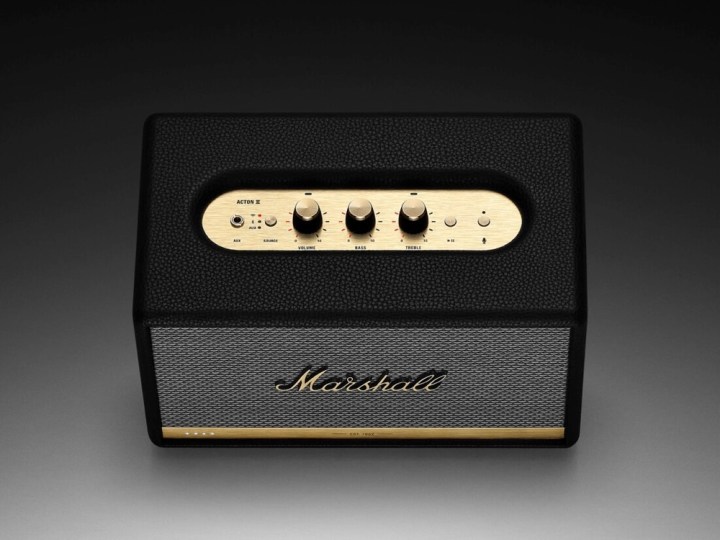
Smart speakers are awesome for many reasons. They respond to your voice, they let you connect to smart home products and services, and of course, they play your favorite streaming music sources. But let’s face it, they’re not always the most stylish gadgets, are they? Sleek though some may be, or perhaps designed to blend with the fabrics in your home, they don’t really make a statement.
The Marshall Voice line of smart speakers, on the other hand, are exactly the opposite: They dig deep into Marshall’s storied past as a legendary guitar amp company, to deliver a smart speaker that any true rock and roller would be proud to display. The only drawback has been the lead singer — if you weren’t a fan of Alexa’s dulcet tones, you were out of luck. Today, this changes: Marshall’s two smart speaker options, the $300 Acton II Voice and the $350 Stanmore II Voice, are now available in Google Assistant-compatible editions.
There is a lot to like about the Marshall Voice speakers. Both feature Wi-Fi connections — a must-have for any voice assistant — which lets them act as nodes in a whole-home audio system, controlled by the Google Home app. They also retain the Bluetooth and auxiliary inputs found on the non-Voice models. Sitting atop the old-school guitar amp cabinets are similarly old-school analog controls for volume, bass, and treble. Of course, these aren’t actual analog controls. Instead, they’re knobs that adjust the digital values for these settings. Still, in a world of increasingly touch-sensitive controls, it’s cool to be able to use something as tactile as a knob.
Both speakers get a twin set of 15-watt class-D amps for the dual tweeters, but the Stanmore II’s bass gets a bit more oomph. Not only is its woofer powered by a 50-watt class-D amp (vs the Acton II’s 30-watt driver), its larger cabinet means there’s more air to move through the reflex port on the back.
The dual-mic array is tuned for far-field voice sensitivity and uses acoustic noise cancellation to help discern voice commands from ambient sounds.
It’s great to see Marshall support both Alexa and Google Assistant — with the exception of Sonos, virtually all third-party speaker companies have chosen to hitch their wagons to just one of these artificial intelligence platforms. But we’re a bit disappointed that Marshall has chosen to do this with two separate versions of its speakers. Given that Google Assistant and Alexa have their own strengths and weaknesses, it’s entirely conceivable that if you like Alexa today, you might prefer Google tomorrow, or vice versa. Needing to sell off your smart speaker to buy the other version seems wasteful, and as Sonos has shown, unnecessary.
Perhaps Marshall will combine support for these assistants within a single product in the future, but for now, you’ll need to pick a bandmate and stick with them.



